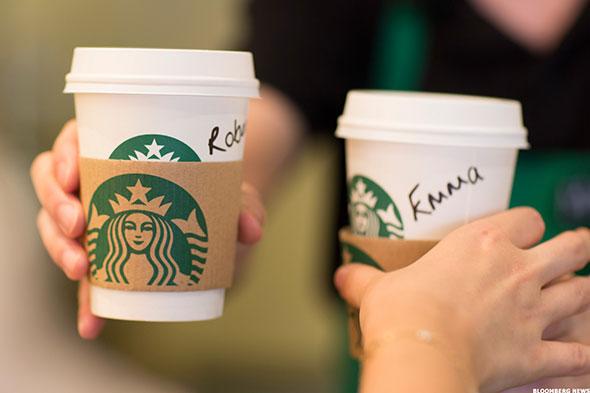Starbucks co-founder reveals coffee chain almost had a different name
"We were thinking of all kinds of names and came desperately close to calling it Cargo House, which would have been a terrible, terrible mistake," Mr Bowker says.

Your support helps us to tell the story
From reproductive rights to climate change to Big Tech, The Independent is on the ground when the story is developing. Whether it's investigating the financials of Elon Musk's pro-Trump PAC or producing our latest documentary, 'The A Word', which shines a light on the American women fighting for reproductive rights, we know how important it is to parse out the facts from the messaging.
At such a critical moment in US history, we need reporters on the ground. Your donation allows us to keep sending journalists to speak to both sides of the story.
The Independent is trusted by Americans across the entire political spectrum. And unlike many other quality news outlets, we choose not to lock Americans out of our reporting and analysis with paywalls. We believe quality journalism should be available to everyone, paid for by those who can afford it.
Your support makes all the difference.The household coffee name we have come to recognise the world over very nearly never was.
The company’s two-tailed green mermaid is etched into the minds of city-dwellers the world over with more than 24,000 shops in 70 countries sharing the title. But the world’s largest coffee chain almost opted for a far less catchy name: Cargo House.
"We were thinking of all kinds of names and came desperately close to calling it Cargo House, which would have been a terrible, terrible mistake," co-founder Gordon Bowker told the Seattle Times.
The catchy Starbucks name was found after Terry Heckler, Mr Bowker’s advertising agency partner said that he thought that words starting with ‘st’ are more powerful. Mr Bowker set to work brainstorming a list of words.
“Somebody somehow came up with an old mining map of the Cascades and Mount Rainier, and there was an old mining town called Starbo,” he explained.
“As soon as I saw Starbo, I, of course, jumped to Melville’s first mate in Moby-Dick. But Moby-Dick didn’t have anything to do with Starbucks directly; it was only coincidental that the sound seemed to make sense,” he said.
Something stuck about the old mining town in Washington and Mr Bowker’s memory of ‘Starbuck’ - the character from Herman Melville’s classic.
“A lot of times you’ll see references to the coffee-loving first mate of the Pequod. And then somebody said to me, well no, it wasn’t that he loved coffee in the book, it was that he loved coffee in the movie,” Mr Bowker explained.
The multi-billion dollar company’s iconic logo also originates in nautical inspiration from the Greek myth of the Siren. The story tells that sirens lured sailors to shipwrecks, one of which was located off the coast of Starbuck Island in the South Pacific.
The first Starbucks shop was opened in Seattle in 1971 at Pike Place Market in downtown Seattle, Washington. In 2011, the company entirely removed the words “Starbucks Coffee” from the logo, preferring for only the famous crowned mermaid to look out from every cup.
“None of the businesses took the course I originally imagined for them, but in a way how could they? It’s like having a child: You don’t know what that child’s going to be when he or she grows up,” Mr Bowker added.
Join our commenting forum
Join thought-provoking conversations, follow other Independent readers and see their replies
Comments